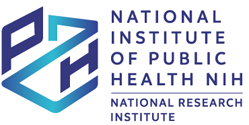ABSTRACT
Background. Physalis peruviana L. fruit contains nutritional and bioactive compounds of immense importance to public health and represents a potential ingredient for the development of functional foods and beverages.
Objective. This study aimed to determine the chemical and nutritional composition as well as the antioxidant capacity of the P. peruviana L. fruit grown in Peru in three areas of the Central Andean region.
Material and methods. Proximal and physicochemical analyses and estimation of mineral content, vitamin C, total carotenoids, total polyphenols, and antioxidant capacity (2, 2-diphenyl-1-picrylhydrazyl [DPPH] and 2, 2′-azinobis (3-ethylbenzothiazoline-6-sulfonic acid) [ABTS] assays) were performed using standardized methods.
Results. The fruits were collected from three regions of the Peruvian Andes (Ancash, Cajamarca, and Cusco). The results showed that the content of potassium (306.54–327.60 mg/100 g) and iron (12.93–14.47 mg/kg) was prominent.
The Physalis fruit had high levels of vitamin C (47.20–52.20 mg/100 g), total polyphenols (68.17–83.40 mg equivalents of gallic acid/100 g), and carotenoids (1.12–1.73 mg β-carotene/100 g). Higher values for antioxidant capacity were obtained with the ABTS method (896–1003.33 μmol Trolox/100 g) than with the DPPH method (290–309 μmol Trolox/100 g).
Conclusions. This study confirms that the P. peruviana fruit has properties that could provide important health benefits and that it could be used for the development of functional foods and food supplement.
Możesz zmienić ustawienia cookies w swojej przeglądarce. Ograniczenie stosowania plików cookies w konfiguracji przeglądarki może wpłynąć na niektóre funkcjonalności dostępne na stronie.



